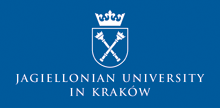Speaker
Description
Linking between positron scattering in the gas phase (i.e. cross sections) and positron annihilation in the liquid phase (i.e. positron lifetimes) remain still poorly understood. In organic molecules, like hydrocarbons, a strong enhancement of the annihilation rate in the gas phase in positron traps was observed already several years ago but this has not been yet “translated” into cross sections [1].
Problems of incongruence remain both on experiments and the theory. Some recent experiments in gas phase suffered from a poor angular resolution at low energies, therefore cross sections are underestimated, see the discussion in [2]. Another source of errors is wrong energy scaling, see [3] for the discussion.
In experimental studies of positron lifetimes in liquids the main uncertainty is the branching ration between ortho and para-positronium: without assuming a correct branching ratio the numerical analysis may produce stray results. A recent theory [4] put some constraints on the analysis of lifetime spectra, enabling to re-evaluate previous experimental data [5].
From the theoretical side, it is difficult to account for the strong correlation between the impinging positron and the molecular electrons. Recently, we have introduced an empirical scaling factor in order to correct for these shortcomings and applied it successfully for positron scattering in benzene [6].
We present a combined comparison of low-energy cross sections in the gas phase (a review of different experiments and the present theory) and re-analyzed positron lifetimes in small organic molecules: acetylene, methanol, benzene and cyclohexane. An agreement in the gas phase is very promising, while lifetimes show to be strongly influenced by the presence of dissolved oxygen and show significant temperature dependences. A discussion will be given.
This work is supported by the grant 2014/15/D/ST2/02358 of the Narodowe Centrum Nauki (National Science Center Poland) and by computer grants from the computer centers WCSS (Wroclawskie Centrum Sieciowo- Superkomputerowe, Politechnika Wroclawska) and TASK (Trójmiejska Akademicka Sieć Komputerowa, Gdańsk).
References:
[1] G.F. Gribakin, J.A. Young, and C.M. Surko, Rev. Mod. Phys. 82 (2010) 2557
[2] G.P. Karwasz, A. Karbowski, Z. Idziaszek, R. S. Brusa, Nucl. Instr. and Meth. B, 266/3 (2008) 471
[3] G. P. Karwasz, R. S. Brusa, and D. Pliszka, IOP Publishing, Journal of Physics: Conference Series,
199 (2010) 012019
[4] G. Marlotti Tanzi, F. Castelli, and G. Consolati, Phys. Rev. Lett. 116 (2016) 033401
[5] A. Karbowski, K. Fedus, K. Służewski, J. Bruzdowska, and G. Karwasz, Acta Phys. Pol. A 132
(2017)1466.
[6] J. Franz and M. Franz Eur. Phys. J. D, submitted (2019).

